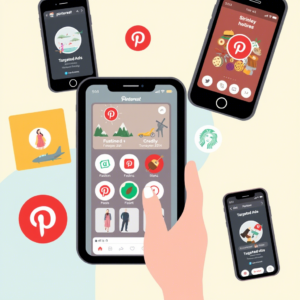Imagine this: you’ve spent hours crafting the perfect ad—beautiful visuals, compelling copy, a killer offer. But when you launch it, no one clicks. Sound familiar?
Here’s the hard truth: if your headline doesn’t grab attention in under three seconds, your ad is already dead. No matter how brilliant your product or service, people won’t care unless your headline makes them stop scrolling, pause, and think, “Wait… this is for me.”
In today’s digital world, where the average person sees over 5,000 ads per day, standing out isn’t just important—it’s survival. And the key to cutting through the noise? Psychology. Not just clever wording, but deep, human-centered insights into what makes people click.
This article dives into the real psychology behind high-CTR (Click-Through Rate) ad headlines—the hidden triggers, emotional levers, and cognitive shortcuts that turn casual scrollers into engaged customers. We’ll explore proven strategies backed by behavioral science, not guesswork. You’ll learn how to craft headlines that don’t just attract eyes, but convert them into action.
From curiosity gaps to fear of missing out, from specificity to urgency, we’ll break down the mental mechanics behind what makes people click—and keep clicking. Whether you’re running Facebook ads, Google Search campaigns, or email promotions, these principles will help you write headlines that don’t just perform—they persuade.
Let’s uncover the mind games that top marketers use (and why they work so well).
1. The Power of Curiosity Gaps: Making People Need to Click
Have you ever clicked on a headline like:
“This One Mistake Is Costing You Thousands”
“What She Found in Her Basement Changed Everything”
“You Won’t Believe What Happened Next…”
You’re not alone. These headlines exploit what psychologists call a curiosity gap—a mental itch your brain must scratch.
Coined by George Loewenstein in the 1990s, the curiosity gap theory suggests that when we sense a gap between what we know and what we want to know, we experience a kind of cognitive discomfort. And the only way to relieve it? Seek the missing information.
This is why mystery-driven headlines are so effective. They tease without revealing. They promise value but withhold the payoff—forcing the reader to click to close the loop.
But here’s the catch: the gap must be meaningful. Clickbait headlines that over-promise and under-deliver damage trust and hurt long-term performance. The best curiosity-driven headlines hint at a real problem or surprising insight—something the reader genuinely wants to solve or understand.
For example:
- Weak: “You Won’t Believe This Trick!” (Too vague)
- Strong: “The 3-Second Trick That Cut My Email Open Rates in Half” (Specific + intriguing)
Pro Tip: Use the “But/Therefore” storytelling framework:
“I was doing everything right—but my ads weren’t converting. Therefore, I tried this one tweak…”
This creates narrative tension and primes curiosity.
Also, try open loops—statements that start a thought but don’t finish it:
“Most marketers miss this one thing… and it’s costing them sales.”
The brain hates unfinished ideas. That’s why people click.
So, next time you write a headline, ask: What do I know that my audience doesn’t—and how can I make them desperate to find out?
2. Emotional Triggers: Why Feelings Drive Clicks More Than Logic
Let’s be honest: people don’t click on ads because they’re rational. They click because they feel something.
Neuroscience confirms this. Studies using fMRI scans show that emotional arousal is the strongest predictor of decision-making, even when we think we’re being logical. When emotions are engaged, attention spikes, memory improves, and motivation increases.
So, what emotions work best in high-CTR headlines?
Here are the top performers:
- Fear of Loss (FOMO): “Don’t Miss Out: Only 3 Spots Left!”
- Hope & Aspiration: “How I Made $10K in 30 Days (And You Can Too)”
- Anger & Injustice: “Why 90% of Diet Pills Are a Scam”
- Surprise & Shock: “This Common Habit Is Aging Your Skin Faster”
- Joy & Relief: “Finally—A CRM That Doesn’t Suck”
These aren’t random. They tap into core human motivations—survival, status, belonging, and self-improvement.
Take FOMO (Fear of Missing Out). It’s rooted in our evolutionary need to belong and avoid social exclusion. Limited-time offers, countdown timers, and “last chance” messaging trigger this instinct hard.
A study by HubSpot found that adding urgency to a headline increased CTR by 22%. Another by VWO showed that scarcity-based headlines outperformed neutral ones by up to 332% in conversion rates.
But emotions must be authentic. Fake urgency or manufactured drama backfires. Instead, focus on real pain points your audience faces.
Ask yourself:
- What keeps them up at night?
- What do they secretly worry about?
- What dream are they too afraid to admit?
Then, reflect that in your headline.
For example:
“Tired of Wasting Money on Ads That Don’t Work?”
“Finally, a Workout Plan That Fits Your Crazy Schedule”
“The Truth About Credit Repair (Banks Don’t Want You to Know)”
Each of these speaks to an emotional state—frustration, exhaustion, or empowerment.
Remember: People don’t buy products. They buy better versions of themselves. Your headline should reflect that transformation.
3. The Rule of Specificity: Why Details Win Trust and Attention
Let’s compare two headlines:
- “Lose Weight Fast with Our New Program”
- “Lose 12 Pounds in 30 Days—Without Starving or Gym Time”
Which one grabs you?
If you said #2, you’re not alone. Why? Specificity.
Our brains are wired to trust concrete information. Vague claims feel like fluff. But numbers, timelines, and tangible outcomes signal credibility.
This is known as the “Rule of Specificity” in copywriting. The more precise your promise, the more believable it becomes.
Research from Copyblogger shows that headlines with numbers get 73% more clicks than those without. Why? Numbers create structure, imply research, and set clear expectations.
But it’s not just about throwing in random digits. The best specific headlines follow a pattern:
[Result] + [Timeframe] + [Method/Condition]
Examples:
- “Grow Your Email List by 200% in 60 Days (Free Guide Inside)”
- “Fix Your Back Pain in 10 Minutes a Day—No Surgery Needed”
- “How I Paid Off $30K in Debt in 18 Months (Step-by-Step Plan)”
Notice how each headline answers the reader’s silent questions:
- Can I really do this?
- How long will it take?
- What’s the catch?
Specificity reduces perceived risk. It tells the reader, “This isn’t a vague promise. This is a roadmap.”
Another powerful tool? Social proof in headlines.
“Join 17,342 Marketers Who Doubled Their CTR”
Numbers here aren’t just stats—they’re proof of popularity and success.
But beware: don’t exaggerate. Over-the-top claims (“Lose 50 Pounds in a Week!”) destroy trust. Be bold, but believable.
Pro Tip: Use odd numbers instead of round ones. Studies show that “17 tips” feels more authentic than “20 tips” because it seems less rounded up or fabricated.
So, next time you write a headline, ask: Can I make this more specific? Can I add a number, a timeline, or a real result?
The more concrete, the more convincing.
4. The Role of Urgency and Scarcity: Why ‘Now’ Beats ‘Later’
Would you act faster if:
- A sale ends in 24 hours?
- Only 5 items are left in stock?
- Registration closes tonight?
Of course you would.
This is the power of urgency and scarcity—two of the most proven psychological triggers in marketing.
First studied by Robert Cialdini in his book Influence, scarcity works because we value things more when they’re rare or disappearing. It’s a shortcut our brain uses to judge worth: If it’s scarce, it must be good.
Urgency, on the other hand, creates time pressure. It forces a decision now, not later—when motivation may fade.
Combined, they’re a conversion powerhouse.
A classic example:
“Only 3 Spots Left at This Price—Enrollment Closes Tonight!”
This headline uses both:
- Scarcity: “Only 3 spots left”
- Urgency: “Closes tonight”
No wonder it converts.
But here’s the key: urgency must be real. Fake countdowns or endless “last chance” offers train users to ignore you.
Instead, use authentic deadlines:
- Webinar sign-ups closing
- Seasonal promotions
- Limited inventory products
A/B tests by Unbounce found that adding a real-time countdown timer to a landing page increased conversions by 9%. When paired with a strong headline, the effect multiplies.
Also, consider event-based urgency:
“Before You Buy Another SEO Tool, Read This (Launch Special Ends Friday)”
This positions your offer as time-sensitive without feeling pushy.
Another angle? Loss framing.
People are twice as motivated to avoid loss as they are to gain something (a concept called loss aversion).
So instead of:
“Get 50% Off Today!”
Try:
“Don’t Lose Your 50% Discount—Offer Expires at Midnight”
The second version feels more urgent because it frames the discount as something you could lose, not just gain.
Use urgency and scarcity wisely—not as manipulative tricks, but as tools to help people make timely decisions.
5. Clarity Over Cleverness: Why Simple Headlines Convert Better
Here’s a common mistake: trying too hard to be clever.
Headlines like:
“Revolutionize Your Workflow with Synergistic Paradigm Shifts”
“Unlock the Quantum Potential of Your Marketing Funnel”
Sound impressive? Maybe. But do they make sense? Not really.
In the real world, clarity beats cleverness every time.
Why? Because attention is limited, and confusion is a conversion killer. If your audience has to stop and think, “Wait… what does this mean?”—they’ve already scrolled past.
Google’s own research shows that clear, benefit-driven headlines perform best in search and display ads. Users want to know immediately what’s in it for them.
So, what makes a headline clear?
- Simple language: Use words your audience uses every day.
- Clear benefit: Answer “What’s the outcome?”
- No jargon: Avoid industry terms unless absolutely necessary.
- Front-load the value: Put the most important info first.
Compare:
- Clever: “Disrupt Your Digital Destiny”
- Clear: “Double Your Website Traffic in 90 Days—Guaranteed”
The second one wins.
Also, consider search intent. If someone is searching for “how to fix a leaky faucet,” your headline should match that intent exactly—not try to sound poetic.
Tools like Google Ads and Facebook Ad Library show that the highest-performing headlines are often the most straightforward:
“Fast, Affordable Plumbing Repair – 24/7 Service”
“Get a Free Quote on Solar Panels Today”
They’re not flashy. But they work.
Remember: Your headline isn’t a riddle. It’s a promise.
An the clearer the promise, the more likely people are to click.
Conclusion: Mastering the Mind Behind the Click
We’ve covered a lot—from curiosity gaps to emotional triggers, specificity, urgency, and clarity. But here’s the big picture: high-CTR headlines aren’t about tricks. They’re about understanding people.
Every time someone scrolls past your ad, they’re making a split-second decision based on emotion, instinct, and subconscious cues. Your job isn’t to manipulate them—it’s to connect with them.
The best headlines do three things:
- Grab attention with a strong hook (curiosity, emotion, or specificity).
- Build relevance by speaking directly to the reader’s needs.
- Drive action with urgency, clarity, and a clear next step.
When you combine psychology with purpose, your headlines don’t just get clicks—they start conversations, build trust, and grow businesses.
So, before you launch your next campaign, ask yourself:
- Does my headline speak to a real human need?
- Does it create curiosity without being misleading?
- Is the benefit crystal clear in under three seconds?
If the answer is yes, you’re not just writing ads. You’re writing persuasion.
Now, I’d love to hear from you: What’s the most effective ad headline you’ve ever written or seen? Share it in the comments—let’s learn from each other.
And if this article helped you rethink your approach, go ahead and share it with a fellow marketer. Because great headlines shouldn’t be a secret—they should be a superpower.




